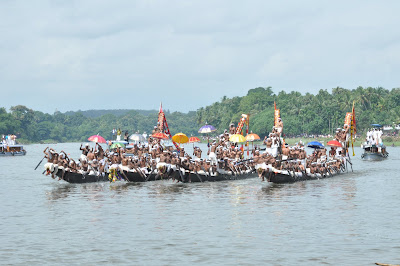Government of India
03-August-2016
Section
|
Old Provision / Penalty
|
New Proposed Provision / Minimum Penalties
| |
177
|
General
|
Rs 100
|
Rs 500
|
New 177A
|
Rules of road regulation violation
|
Rs 100
|
Rs 500
|
178
|
Travel without ticket
|
RS 200
|
Rs 500
|
179
|
Disobedience of orders of authorities
|
Rs 500
|
Rs 2000
|
180
|
Unauthorized use of vehicles without licence
|
Rs 1000
|
Rs 5000
|
181
|
Driving without licence
|
Rs 500
|
Rs 5000
|
182
|
Driving despite disqualification
|
Rs 500
|
Rs 10,000
|
182 B
|
Oversize vehicles
|
New
|
Rs 5000
|
183
|
Over speeding
|
Rs 400
|
Rs 1000 for LMV
Rs 2000 for Medium passenger vehicle
|
184
|
Dangerous driving penalty
|
Rs 1000
|
Upto Rs 5000
|
185
|
Drunken driving
|
Rs 2000
|
Rs 10,000
|
189
|
Speeding / Racing
|
Rs 500
|
Rs 5,000
|
192 A
|
Vehicle without permit
|
upto Rs 5000
|
Upto Rs 10,000
|
193
|
Aggregators (violations of licencing conditions)
|
New
|
Rs 25,000 to
Rs 1,00,000
|
194
|
Overloading
|
Rs 2000 and
Rs 1000 per extra tonne
|
Rs 20,000 and
Rs 2000 per extra tonne
|
194 A
|
Overloading of passengers
|
Rs 1000 per extra passenger
| |
194 B
|
Seat belt
|
Rs 100
|
Rs 1000
|
194 C
|
Overloading of two wheeler's
|
Rs 100
|
Rs 2000, Disqualification for 3 months for licence
|
194 D
|
Helmets
|
Rs 100
|
Rs 1000 Disqualification for 3 months for licence
|
194 E
|
Not providing way for emergency vehicles
|
New
|
Rs 10,000
|
196
|
Driving Without Insurance
|
RS 1000
|
Rs 2000
|
199
|
Offences by Juveniles
|
New
|
Guardian / owner shall be deemed to be guilty. Rs 25,000 with 3 yrs imprisonment. For Juvenile to be tried under JJ Act. Registration of Motor Vehicle to be cancelled
|
206
|
Power of Officers to impound documents
|
Suspension of driving licenses u/s 183, 184, 185, 189, 190, 194C, 194D,194E
| |
210 B
|
Offences committed by enforcing authorities
|
Twice the penalty under the relevant section
|











